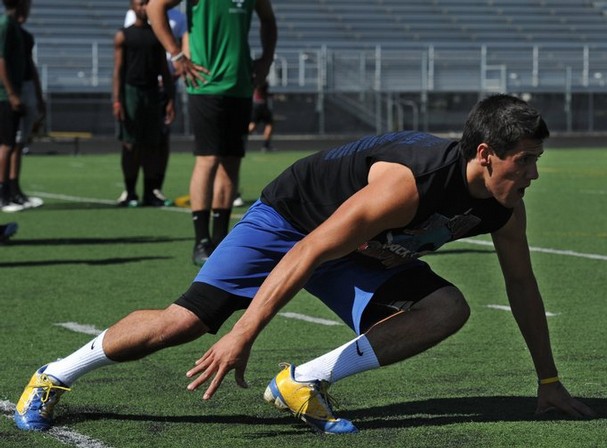
Avoid Becoming Complacent
For many athletes competing at the highest levels of their sport, the time spent during the off-season can be wasted to produce mediocrity or capitalized to create absolute greatness.
The off-season time is defined as the period when an athlete is not training or competing, however many internationally recognized athletes take advantage of their off-season time to rigorously train to reach higher levels of potential.
When athletes play their sport year-round they leave themselves susceptible to injuries and mental exhaustion that can quickly lead to a burnout.
An off-season training schedule consisting of strength and muscle building routines can prevent the athlete from losing momentum in his sport and maximize their potential during the playing season.
In this short article, we’ll go into how strength training during the off-season can be used to improve weak areas.
How Athletes Can Remain Productive During the Off-Season

While many athletes’ schedules vary in length due to the number of games per season, the off-season time period eventually comes and ultimately a decision has to be made: continue training or use the next few months to recover?
At the end of a playing season, an athlete’s muscles are most likely sorely exhausted, requiring some time for physical therapy and readjustment.
A pitcher, for example, would need the time away from the sport to rehabilitate his rotator cuff, which often comes into injury after so many attempts utilizing their throwing arm.
Strength training in this situation can be used to focus on other muscle groups that can be properly developed to improve performance while damaged muscles are recovering. A split training program with progressive overload during the next couple months can accomplish this and deliver fantastic results.
For an athlete to make an impressive performance, they should be more than capable to showcase both power and speed. Power and speed are both products of having strong, lean muscle and very little body fat, which can be developed with a weight training program that can strengthen specific muscle groups.
Just increasing numbers on big lifts, like the bench press or squat, won’t really do much for improving athletic performance. Weight and progressive overload have to be applied to movements that are similar to more dynamic movements (lots of plyometric and endurance exercises).
To make improvements on a power/strength development program, higher levels of progression involves incorporating balance movements. Focusing on balance movements in the later stages of a program allows the athlete to concentrate on strength while improving agility, especially during plyometric exercises.
The best type of exercises for this type of training is jumping squats, farmer walks, plyometric push-ups, and burpees. After weeks of training with these exercises, they can be progressed into more advanced movements as strength improves.
The Wrap Up
Instead of letting off-season time go to waste, it’s more productive for athletes to spend time conditioning their bodies for the next playing season. Strength training can improve your weak areas but can be counterproductive to athletes that do not necessarily want/need bigger muscles. Exercises emphasizing power, speed, and agility are best for this type of athletic development and can be applied with a progressive method during the training program.

Leave a Reply
You must be logged in to post a comment.